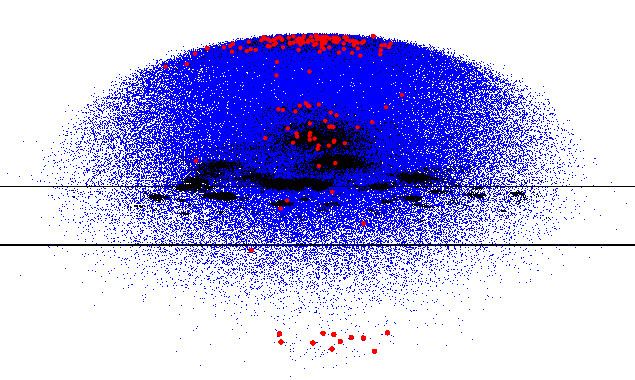 | ||
A relativistic runaway electron avalanche (RREA) is an avalanche growth of a population of relativistic electrons driven through a material (typically air) by an electric field. RREA has been hypothesized to be related to lightning initiation, terrestrial gamma-ray flashes, sprite lightning, and to spark development. RREA is unique as it can occur at electric fields an order of magnitude lower than the dielectric strength of the material.
Contents
Mechanism
When an electric field is applied to a material, free electrons will drift slowly through the material as described by the electron mobility. For low-energy electrons, faster drift implies higher friction so the drift speed tends to stabilize. For electrons with energy above about 100 eV, however, higher speeds imply lower friction. An electron with a sufficiently high energy therefore may be accelerated by an electric field to even higher and higher energies, encountering less and less friction as it accelerates. Such an electron is described as a "runaway."
As runaway electrons gain energy from an electric field, they occasionally collide with atoms in the material, knocking off secondary electrons. If the secondary electrons also have high enough energy to run away, they too accelerate to high energies, produce further secondary electrons, etc. As such, the total number of energetic electrons grows exponentially in an avalanche.
Seeding
The RREA mechanism above only describes the growth of the avalanche. An initial energetic electron is needed to start the process. In ambient air, such energetic electrons typically come from cosmic rays. In very strong electric fields, stronger than the maximum frictional force experienced by electrons, even low-energy ("cold" or "thermal") electrons can accelerate to relativistic energies, a process dubbed "thermal runaway."
Feedback
RREA avalanches generally move opposite the direction of the electric field. As such, after the avalanches leave the electric field region, frictional forces dominate, the electrons lose energy, and the process stops. There is the possibility, however, that photons or positrons produced by the avalanche will wander back to where the avalanche began and can produce new seeds for a second generation of avalanches. If the electric field region is large enough, the number of second-generation avalanches will exceed the number of first-generation avalanches and the number of avalanches itself grows exponentially. This avalanche of avalanches can produce extremely large populations of energetic electrons. This process eventually leads to the decay of the electric field below the level at which feedback is possible and therefore acts as a limit to the large-scale electric field strength.
Effects of RREA
The large population of energetic electrons produced in RREA will produce a correspondingly large population of energetic photons by bremsstrahlung. These photons are proposed as the source of terrestrial gamma-ray flashes. Large RREA events in thunderstorms may also contribute rare but large radiation doses to commercial airline flights. The American physicist Joseph Dwyer has coined the term "dark lightning" for this phenomenon, which is still the subject of research.
